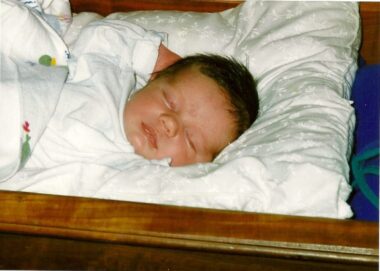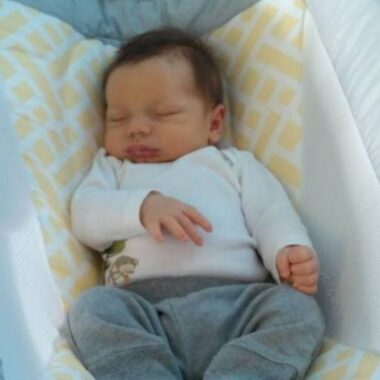Why we never take a single breath for granted
A columnist recalls the respiratory concerns that have affected her family
Written by |

Respiratory ailments never bothered my husband, Randy, or me in Fort Worth, Texas, where we grew up. Columbia, South Carolina, our destination in 1985, was wretchedly muggy but didn’t prompt any allergy issues, either.
In the early 1990s, we moved to Lenoir, North Carolina, where furniture factories thrived. That would’ve been fine had our son, Matthew, not attended an elementary school smack-dab in the middle of prolific pollution. His allergy symptoms gradually worsened over the next few years until one night, his breathing struggles landed us in the emergency room for an asthma diagnosis. An inhaler was prescribed.
Asthma was quite prevalent in Lenoir, so sure enough, not long after our daughter, Katie, entered kindergarten at the same school, she snagged an inhaler of her own.
In the middle of the following school year, with Matthew in fourth grade and Katie in first, we moved to the North Carolina mountains. The myriad adjustments kept life lively: a blizzard, flying squirrels in the house, salamanders in our drinking water, and a single bathroom with a temperamental toilet, for starters.
It didn’t take long to recognize the most exciting revelation: The clear air in our new rural area apparently rendered inhalers unnecessary. I was elated that respiratory issues were history!
But I was wrong.
SMA’s destructive nature
Our third baby, Jeffrey, delivered a few surprises to us, starting with the positive pregnancy test. His arrival on May 18, 1997, came two weeks ahead of schedule. He was such an exceptionally contented, quiet baby that I jokingly wondered if we’d be making up for it during his teen years.
We didn’t get the opportunity to find out. A diagnosis of spinal muscular atrophy (SMA) gobsmacked us eight weeks after Jeffrey’s arrival. Life for the next three and a half months was spent in survival mode, both for him and for us.

Baby Jeffrey Baldwin in 1997. (Photo by Helen Baldwin)
Although SMA packs a potent punch, it was the respiratory struggles that left me limp. Seared into my memory are images of the panic in Jeffrey’s eyes during an impromptu, ill-fated In-Exsufflator trial and as SMA’s progression wreaked unforgiving havoc on his ability to breathe.
Jeffrey wrangled free from SMA’s deadly clutches before he reached six months. Witnessing your child’s final breath is devastatingly surreal. It isn’t normal in the scheme of things. However, neither is pumping your baby full of morphine, suctioning secretions every few minutes, and praying for God to take him.
As we adjusted to the unthinkable, our heavy hearts relied on reminders that Jeffrey was in the perfect place, safe from harm.
Incredibly, our family remained fairly and uneventfully upright for years.
Gasping for air
Years after our SMA assignment ended, I awoke one morning gasping for air. It was promptly deemed an emergency. I was treated in a hospital emergency room for reactive airway disease and given several prescriptions, including a pearl that would paralyze my throat if I bit down on it. I didn’t.
Since the ER folks couldn’t tell what had happened, I racked my brain until I hit upon a plausible culprit. Our old farmhouse doesn’t have air conditioning, so unless there’s a monsoon, the windows generally remain open from spring until fall. My computer is situated in front of a tall window on the side of the house mere yards from a small creek. The property on the other side of the creek tends to be untamed, as they say.
During a particularly chaotic schedule, Randy and I had hired someone to mow and cut weeds. It happened to be unusually dry at the time. Because our yard person mowed and used a Weed Eater with abandon, it was likely that the dry stuff being churned up and spit out in the direction of my window — and my lungs — included poison ivy, poison oak, and other irritants. It made sense that I’d likely breathed dust from pulverized poison ivy — an unfortunate event because now I know what to do next time.
Thankfully, next time didn’t come, and breathing issues became a moot point.
And then came James.
Battling different breathing challenges

Our grandson, James Baldwin, in 2018. (Photo by Helen Baldwin)
Randy and I are PopPop and MomMom to two delightful grandchildren, Clara and James. Clara’s diagnosis of Beckwith-Wiedemann syndrome caught us off guard. Her case is mild, and we breathed a sigh of relief when it seemed a certainty that James wouldn’t follow suit.
At 14 months, though, James experienced such a horrific case of croup that he was admitted to a local hospital. Within hours of dismissal, he was on his way to a more sophisticated hospital for additional treatment. Seeing Matthew and our daughter-in-law, Jill, being utterly exhausted while driving off with a very sick little James unleashed a few memories, especially since their destination was Brenner Children’s Hospital in Winston-Salem, North Carolina, where Jeffrey was diagnosed.
Today, James, 6, still experiences occasional respiratory issues that are significant. The doctor expects him to outgrow them, but until then, I’m confident that his angel “twin” will be breathing right along with him.
Because he can.
Note: SMA News Today is strictly a news and information website about the disease. It does not provide medical advice, diagnosis, or treatment. This content is not intended to be a substitute for professional medical advice, diagnosis, or treatment. Always seek the advice of your physician or other qualified health provider with any questions you may have regarding a medical condition. Never disregard professional medical advice or delay in seeking it because of something you have read on this website. The opinions expressed in this column are not those of SMA News Today or its parent company, Bionews, and are intended to spark discussion about issues pertaining to spinal muscular atrophy.








Leave a comment
Fill in the required fields to post. Your email address will not be published.